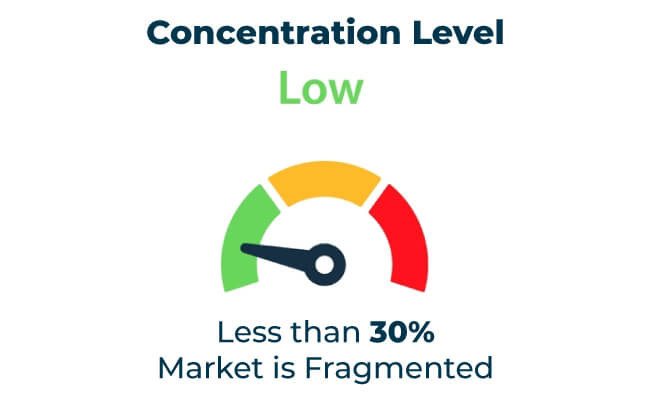The smart label market is witnessing rapid growth as industries adopt innovative and efficient solutions for tracking, monitoring, and enhancing product information. Smart labels, leveraging technologies like RFID, NFC, and QR codes, are widely used across retail, healthcare, logistics, and food sectors.
By 2035, the market is projected to reach USD 23.52 billion, growing at a compound annual growth rate (CAGR) of 10.3%. Key growth drivers include advancements in IoT technologies, increasing demand for transparency and traceability, and the growing need for real-time product insights.
| Attribute | Details |
|---|---|
| Projected Value by 2035 | USD 23.52 billion |
| CAGR during the period 2025 to 2035 | 10.3% |
Manufacturers are focusing on integrating advanced technologies, enhancing durability, and promoting sustainability. Collaborations with key industries ensure alignment with operational and consumer demands.
Exclusive Offer: 30% Off on Regional Reports
Get a free sample report and customize your regions for a 30% discount on your regional report!
Factors Driving Market Growth
The smart label market is driven by several key trends:
| Category | Market Share (%) |
|---|---|
| Top 3 Players (Avery Dennison, Zebra Technologies, Sato Holdings) | 14% |
| Rest of Top 5 Players (Thinfilm, Smartrac) | 06% |
| Next 5 of Top 10 Players | 09% |
Type of Player & Industry Share (%)
| Type of Player | Market Share (%) |
|---|---|
| Top 10 Players | 29% |
| Next 20 Players | 47% |
| Remaining Players | 24% |

Low concentration highlights the industry to be fragmented setting a competitive environment with room for emerging players to innovate and grow.
Year-on-Year Leaders
Check Free Sample Report & Save 40%!
Select your niche segments and personalize your insights for smart savings. Cut costs now!
Emerging markets in Asia-Pacific, Africa, and South America present significant growth potential. High demand for cost-effective, durable, and IoT-enabled smart labels drives opportunities.
In-House vs. Contract Manufacturing
| Region | North America |
|---|---|
| Market Share (%) | 35% |
| Key Drivers | Strong focus on IoT integration and compliance standards. |
| Region | Europe |
|---|---|
| Market Share (%) | 30% |
| Key Drivers | Emphasis on sustainability and traceability solutions. |
| Region | Asia-Pacific |
|---|---|
| Market Share (%) | 25% |
| Key Drivers | Growth in retail, logistics, and e-commerce sectors. |
| Region | Other Regions |
|---|---|
| Market Share (%) | 10% |
| Key Drivers | Demand for cost-effective and scalable smart labels. |
The smart label market will advance through innovations in IoT integration, sustainability, and customization. Companies prioritizing eco-conscious practices and advanced technologies will lead the market.
| Tier | Key Companies |
|---|---|
| Tier 1 | Avery Dennison, Zebra Technologies, Sato Holdings |
| Tier 2 | Thinfilm, Smartrac |
| Tier 3 | Toppan Printing, Alien Technology |
The smart label market is poised for significant growth, driven by IoT advancements, sustainability goals, and increasing demand for transparency and efficiency. Companies investing in innovative technologies and eco-friendly practices will secure a competitive edge.
Key Definitions
Abbreviations
Research Methodology
This report is based on primary research, secondary data analysis, and market modeling, validated through industry expert consultations.
Market Definition
The smart label market encompasses innovative tracking, monitoring, and consumer engagement solutions leveraging RFID, NFC, and QR technologies, focusing on sustainability and operational efficiency.
Advancements in IoT technologies, demand for transparency, and operational efficiency drive growth.
The market is projected to reach USD 23.52 billion, growing at a compound annual growth rate (CAGR) of 10.3%.
Avery Dennison, Zebra Technologies, and Sato Holdings are among the leading companies.
High initial costs, integration challenges, and limited market awareness are key challenges.
Opportunities include growth in retail and logistics, technological innovations, and increased consumer demand for interactive and traceability-focused solutions.
Explore Tech in Packaging Insights
View Reports
Thank you!
You will receive an email from our Business Development Manager. Please be sure to check your SPAM/JUNK folder too.